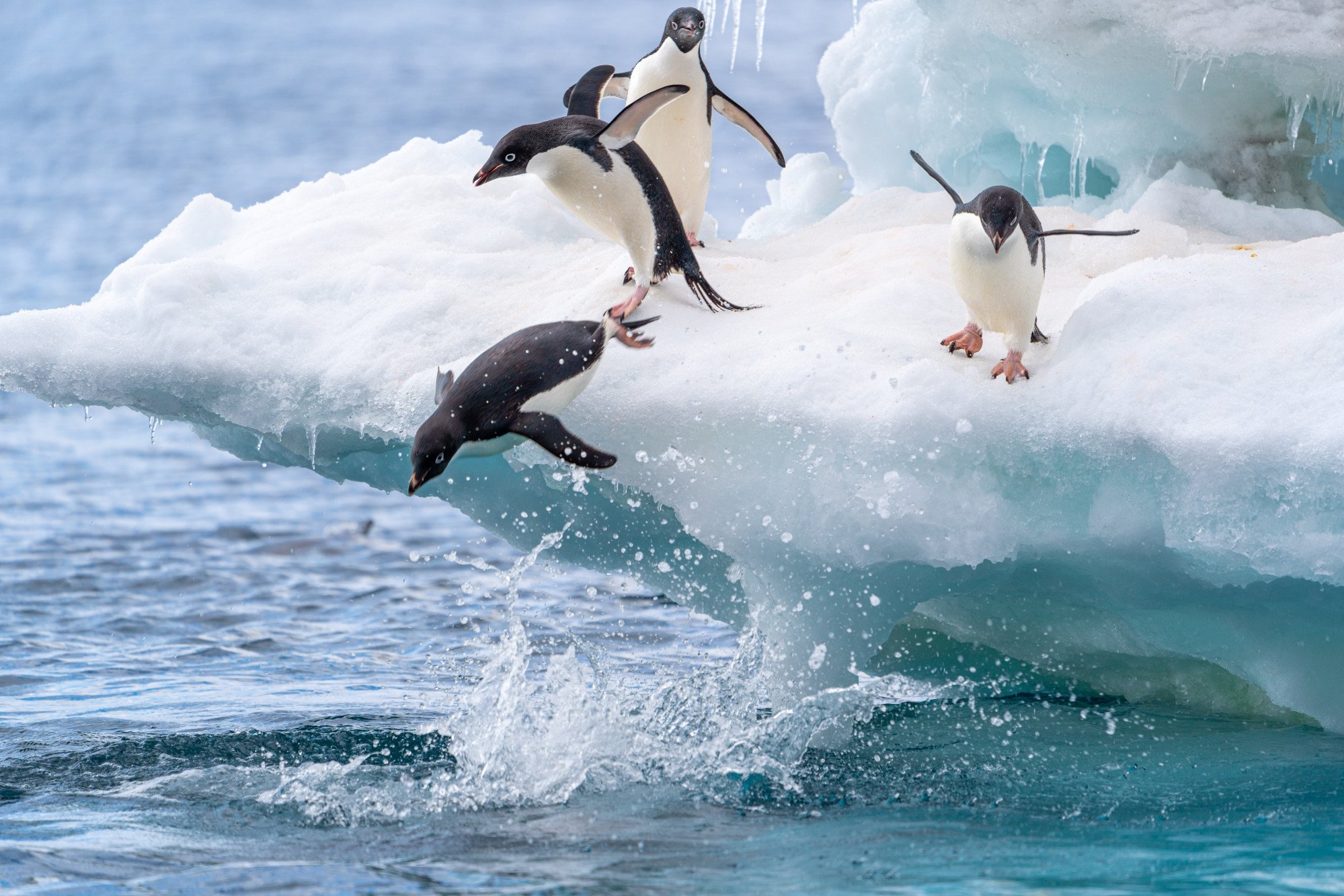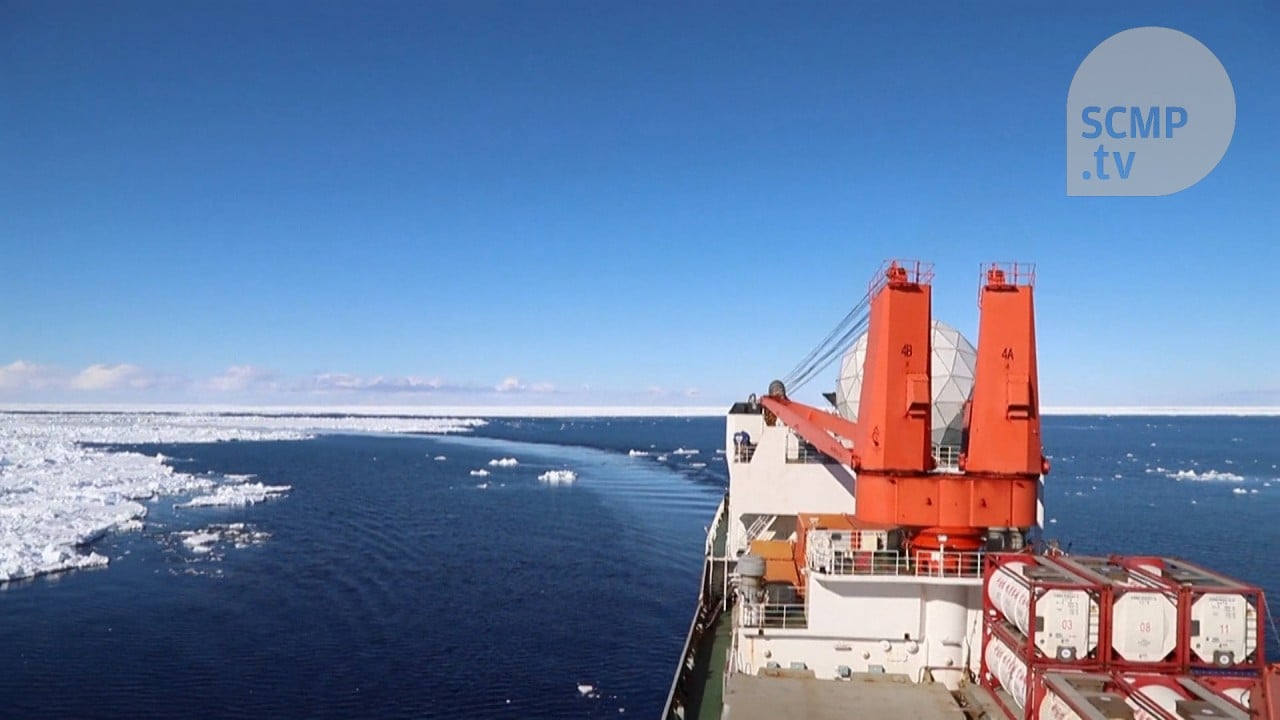
Chinese researchers help decode gene secrets of tiny Antarctic krill
- Study jointly led by China’s BGI-Research reveals how huge genome size helps tiny shrimp-like creatures survive in icy polar waters
- Team from Australia, China, Denmark, Germany and Italy has produced largest animal genome sequence to date, according to study published in Cell
They are not much bigger than a large paper clip, but the shrimp-like Antarctic krill do pack a jumbo genetic punch – a major tool for their survival in icy polar waters.
To survive, krill can fast for up to 200 days and even shrink their bodies from adult to juvenile size when food is scarce.
They can also lay thousands of eggs in one go that sink to 1,000 to 2,000 metres (3,280 to 6,560 feet) deep into the ocean to hatch undisturbed, before the larvae float back to the surface to feed on microorganisms.
Chinese scientists say penguins stopped flying before polar ice sheets
Their enormous genome size – around 16 times larger than that of a human – and its complexity present major challenges for research into Antarctic krill.
But a team of scientists from Australia, China, Denmark, Germany and Italy has been able to produce what is the “largest animal genome sequence to date”, according to their findings published in the peer-reviewed journal Cell.
The Antarctic krill’s large genome size lies behind its high adaptability to extreme living conditions, noted Fan Guangyi, co-corresponding author of the study published on Friday.
“More than 90 per cent of the Antarctic krill genome is made up of repetitive sequences, resulting in a large genome size. When the environment changes, krill have ample [genetic] materials to replenish or cut down on [their size],” said Fan, chief scientist at the Institute of Digital Earth at BGI-Research, which jointly led the study.
“It’s like when there is extra food at home, we have plentiful resources to deal with key changes from the outside,” Fan explained.
BGI-Research in eastern China is a non-profit division of the Shenzhen-headquartered BGI Group, the world’s largest genome research organisation.
Researchers from the Chinese Academy of Fishery Sciences’s Yellow Sea Fisheries Research Institute, the Alfred Wegener Institute in Germany and the Australian Commonwealth Scientific and Industrial Research Organization were among those who also took part in the study.
The team’s analysis revealed that Antarctic krill have 25 significantly expanded gene families, six of which allow them to moult or shed outer layers continuously and also manage energy metabolism, thus supporting their life cycle in the Antarctic environment.

Growing to around 6cm (2.4 inches) and weighing about 2 grams (0.07 ounce), these species of krill have a lifespan of about six years, living under polar winter darkness for half of each year.
Their circadian rhythm – a sleep-wake pattern that usually follows the sun’s cycle – was found to have a similar framework as that of mammals and fruit flies, for instance. But there were differences in expression levels for several genes in the feedback pathway.
The total Antarctic krill population weighs 300 to 500 million tonnes, which is the world’s largest biomass of wild animal species, according to the study.
Antarctic krill form a critical link in the food chain in the Southern Ocean and influence ecosystem functionality because of their enormous biomass, the researchers said.
“Krill are highly adaptable,” Fan explained.
“When the temperature increases, say by 1 degree Celsius, the effect on krill might not be significant. When food is scarce, the krill can endure hunger and not eat for 200 days, and can shrink its body size.
“While the krill are able to survive, other animals that feed on krill, such as whales, starve. Krill affect the whole ecosystem.”

Fan pointed to 2017, when only two chicks survived in a colony of 18,000 pairs of Adélie penguins, which live mostly off krill.
According to the global conservation body WWF, the breeding failure in East Antarctica was linked to unusually extensive sea ice late in the summer that year. Adult penguins had to travel further to forage for food for their chicks, which left them starving.
Changes in Antarctic krill population size also coincided with climate change events.
Antarctic sea ice retreats to lowest level since records began 44 years ago
There was a “drastic reduction” in their numbers 10 million years ago, coinciding with extreme climate events related to the Ice Age, when overall temperatures fell in the Southern Ocean, the study found.
Around 100,000 years ago, there was a population rebound with the formation of a larger area of sea ice, the frozen seawater that is the krills’ natural habitat.
However, “the impact of rapid climate change on Antarctic krill will be hard to predict,” the team said.
“The habitat of krill [is likely to] shift to higher latitudes in these areas, but how climate change will impact krill population size and, consequently, the Antarctic ecosystem that depends on krill, are critical questions that need to be addressed urgently.”


